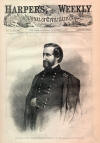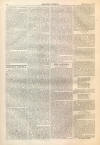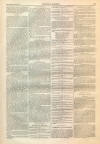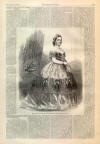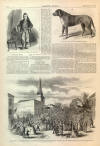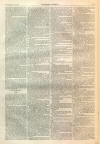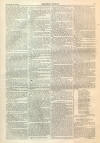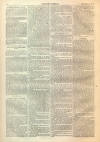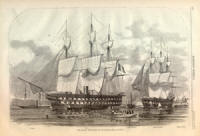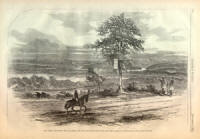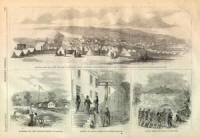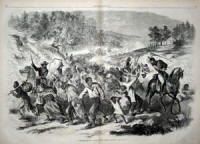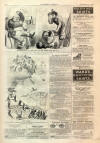The Youngest Soldier in the Civil War
|
|
This Site:
|
HARPER'S WEEKLY. [NOVEMBER 8, 1862. 710 UNION JACK, THE PET OF OUR RICHMOND PRISONERS.A YOUNG HERO.ON this page we publish the portrait of a young hero, JOHN W. PACKHAM, THE YOUNGEST CORPORAL IN THE UNITED STATES ARMY. The following letter will explain why we give his likeness at this time: "KANAWHA RIVER, September 30, 1862 "To the Editor of Harper's Weekly: "Herewith I send you a likeness of the little hero of Company F, 34th Regiment Ohio First Zouaves, and youngest Corporal in the United States Army. He deserves honorable mention for his bravery in refusing to go over to the rebels when threatened with death if he did not comply. "The incident was as follows: John W. Packham, aged thirteen, regimental marker, and son of Lieutenant Albany Packham, of the 34th Regiment Ohio First Zouaves, was sent on in the rear of the ambulances, from Fayetteville to Gauley River; but upon turning the hill, about five hundred yards from the camp, they came upon two thousand rebels in the woods. A number came to the opening, and one called to our little hero (he being the only one with the ambulances in a Zouave uniform) and said, 'You little red - top devil, come over here, or I'll kill you.' He answered, 'No, I can't come!' Again and again they called to him. One finally stepped forward a few paces, raised his rifle to his shoulder, and said, 'You little fool, come over; we won't hurt you; we want to talk to you.' The little hero still refusing, the rebel fired, the ball striking and shattering his right knee. The rebels then opened a murderous fire into our sick in the ambulances, killing and wounding thirty-two who were lying therein. That rebel volley brought down the Zouaves, and the battle of Fayetteville commenced. Your artist was near the breastworks, coolly sketching the combatants at that point. "The little hero is now in the hospital at Gallipolis, doing well under the kind nursing of the ladies, who bring him all the delicacies of the season. "Yours respectfully, C—." "UNION JACK,"THE PET OF OUR RICHMOND PRISONERS.THE poetic incidents of this war would fill many an interesting volume could they be collected by some able hand; and it would appear that it is not man alone who is being roused to deeds of heroism, but that even the brute creation are catching the contagion. The distinguished individual who forms the subject of this brief memoir, and whose portrait graces our present number, is the already-famous "UNION JACK," or "JACK—as he is more briefly and familiarly called among his friends. We are not aware of Jack's entertaining any ambitious desire of being promoted to the rank of a Brigadier-General, nor have we heard of any intention, on his part, to get up a grand bow-wowing demonstration in any of our crowded theatres; but this excessive modesty should not induce us to hide his merits. Although walking upon four legs, he has exhibited far more courage, devotion, trust-worthiness, and other noble human qualities—indeed done more actual good to our army—than many a shoulder-strapped and gold-bedizened animal now walking upon two legs. The writer of this sketch first had the honor of becoming acquainted with Jack at Fortress Monroe, on the interesting occasion of the arrival there of our liberated prisoners from Richmond—some 160 officers—on the 19th of August last. He seemed to belong to nobody in particular, but followed these officers every where about the Hygeia Hotel, receiving such caresses and marks of deep affection from every officer that we were tempted to inquire into his history. He is a young dog of the mastiff breed, of medium size and jetty blackness, except a white breast and a dash of white on each of his four paws. His manners are very gentle and even timid among his friends, but he is suspicious and fierce as a lion when among his enemies. Although born in Secessia, and breathing constantly the air of treason, he is intensely loyal to the Union, and betrays a hatred of any thing in the shape of a rebel, which many of our "conservative" and "neutral" loyalists in the North would do well to imitate. Jack originally belonged to a rebel jailer in Front Royal, Virginia, when Company F and I of the First Maryland regiment were there on provost guard duty. When Jackson made an advance upon the place, these companies fell back to join their regiment in repelling him, and, after a severe action, were surrounded by Jackson, taken prisoners, and brought back to Front Royal. It was on this occasion that Jack's great military, loyal, and social qualities were first brought into conspicuous display. When Companies F and I left Front Royal to take the field, Jack insisted upon accompanying them, in spite of all his master's efforts to detain him. He proceeded with them to the battle-field—keeping company with the officers as he went along —and his first exploit was trying hard to unearth a cannon-ball which he had seen bury itself near him. Presently the shells began to scream and burst in the air all around him. When Jack saw them coming, instead of running to hide himself— (Next Page) JOHN W. PACKHAM, THE YOUNGEST CORPORAL IN THE ARMY.RECEPTION OF THE NINTH INDIANA VOLUNTEERS AT DANVILLE, KENTUCKY, AFTER DRIVING OUT THE REBELS.—DRAWN BY MR. H. MOSLER.—[SEE PAGE 715.]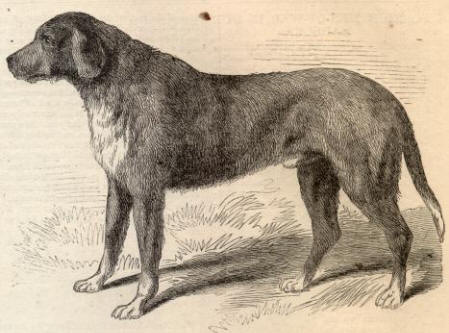 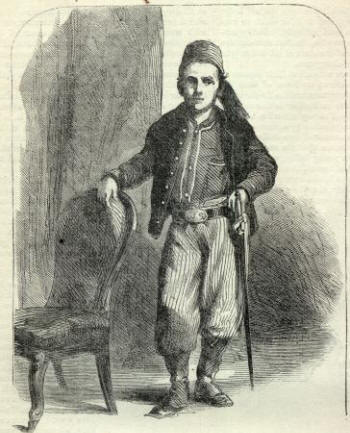 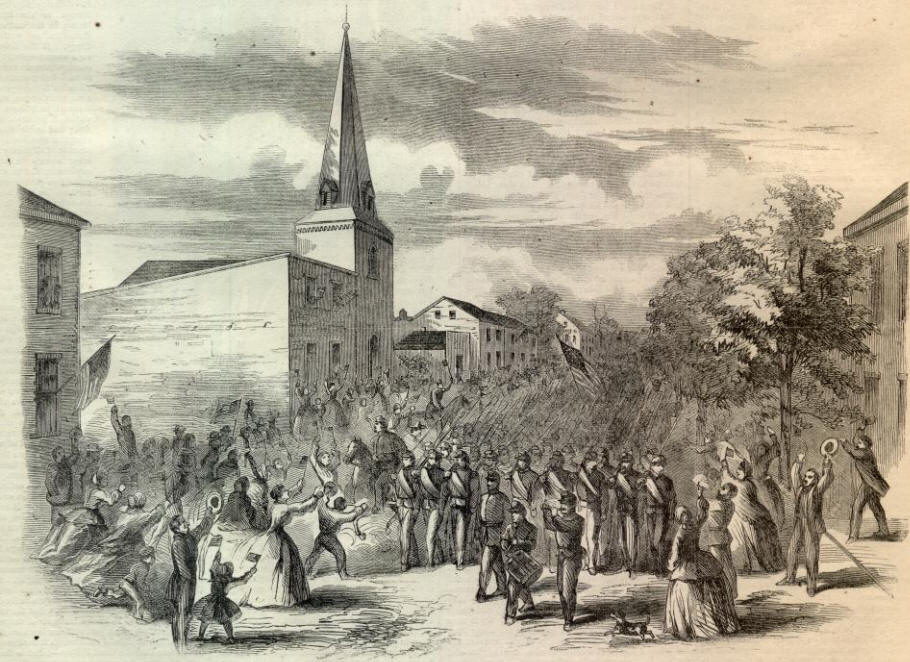 |
||||||||||||||||||||||||||||||
|
|
||
|
|
Site Copyright 2003-2018 Son of the South. For Questions or comments about this collection, contact paul@sonofthesouth.net |
|
|
Are you Scared and Confused? Read My Snake Story, a story of hope and encouragement, to help you face your fears. |
||
